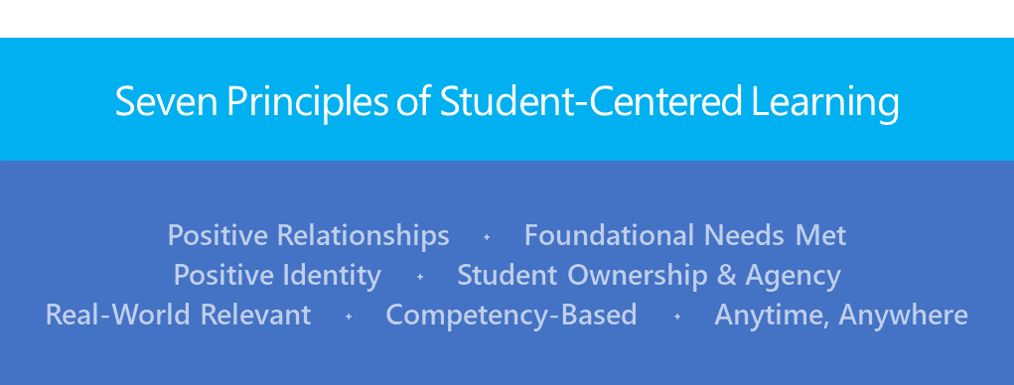Student-centered learning
Create a pedagogy inclusive of teaching and learning practices that are project- and competency-based, collaborative, and require students to own their learning.
Creating student-centered classrooms focused on student autonomy/agency and conversations between students and educators on learning is the focus of learning in the 21st century. Student-centered learning environments are ones in which systems and structures are intentionally designed in ways that promote student learning.
Education Evolving's Seven Principles of Student-centered Learning points to seven attributes as key to student-centered learning. Instead of students being the receivers of knowledge created by adults, school systems should be redesigned to allow for a much greater focus on what and how students want to learn based on things that make each student unique, including their interests, needs, culture, learning styles, experiences, and challenges.
Meeting these seven principles may not happen immediately, but as part of the school or district’s vision, leadership should assess what they are doing to ensure student-centered learning.
Below are a few ways to incorporate student-centered learning using Microsoft technology.

One of Microsoft's tools created to amplify student voice is Flipgrid. Flipgrid enables students to share their thoughts and ideas in a safe space and creates a sense of community when being in a classroom is not possible.
Christine McKee uses Flipgrid to enhance reading comprehension, speech development, and learning in her classroom, school, and district as an attempt to reach each student and support their diversity of needs.
In Canada, one school district has turned to Microsoft Learning Tools to help students at all levels improve their reading and writing.
Sparking curiosity and imagination is key in supporting student engagement in their learning. Minecraft: Education Edition
Primary school educators in Northern Ireland sought interactive, interdisciplinary ways to bring STEM into history and technology classes. CCEA (Council for the Curriculum, Examinations, and Assessment) worked with educators and an educational technology company, Immersive Minds, to develop a Vikings curriculum for Minecraft: Education Edition. Using Minecraft for interdisciplinary STEM learning helps prepare students to solve problems creatively, collaboratively, and with technology.
Think about your district or school. What is the focus of your students' experience currently? Are you seeing educators cultivating student-centered learning? If not, what is the first step you can take as a school leader to build an educator's ability to spark learning?